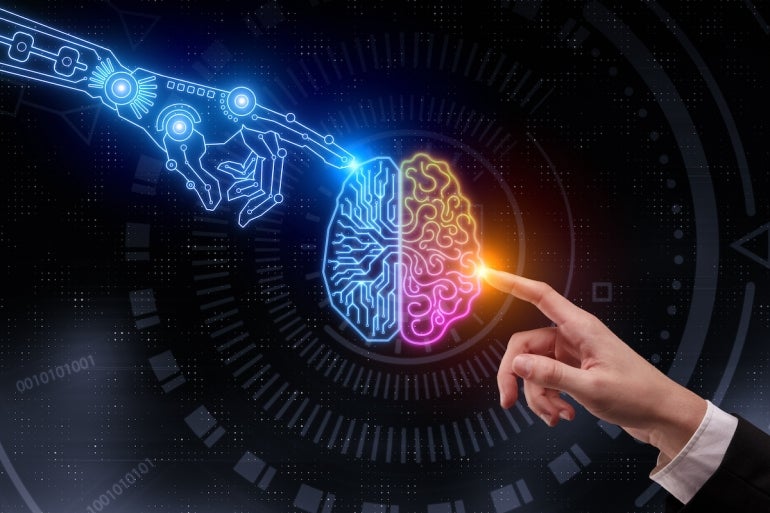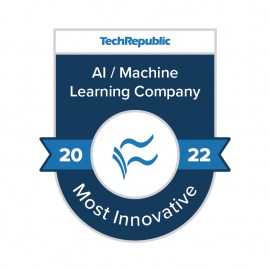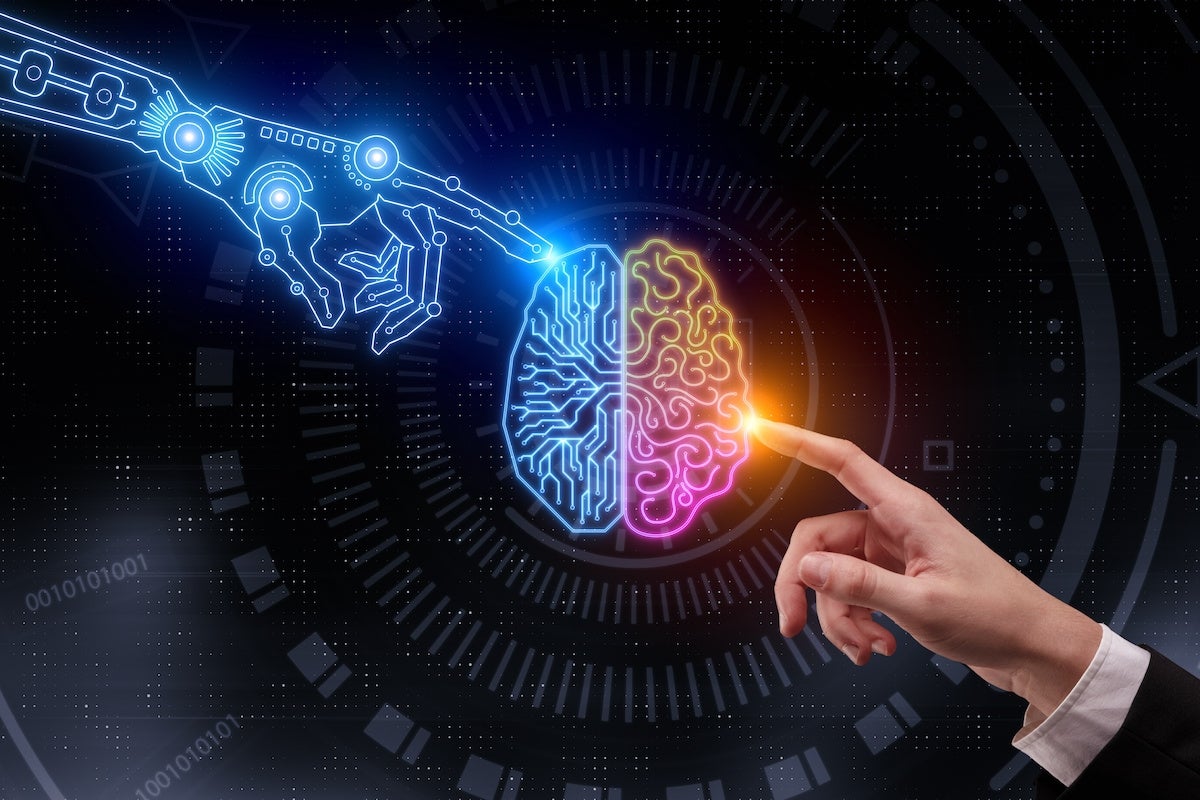
As enterprises increasingly try to put their data to work using artificial intelligence and machine learning, the landscape of vendors and open source projects can be daunting. And if anything, it’s only becoming more chaotic.
As FirstMark partner Matt Turck has written, in 2021 the industry saw a “rapid emergence of a whole new generation of data and ML startups,” and in 2022, this trend looks set to continue. AI/ML is so hot, in fact, that even with a recession looming CIOs remain loath to cut spending on AI/ML projects.
So where will enterprises spend that money? Or, rather, with whom?
To help you navigate the sometimes bewildering array of AI/ML options out there, I talked with data science professionals to get their picks on the most innovative companies in AI/ML. Though historically the industry focused on gee-whiz AI, such as computers that could play games or seemingly offer human reason, much of today’s innovation is in less sexy but more essential areas like data preparation and operational concerns.
Jump to:
Hyperscale clouds
For many enterprises, the “easy button” for AI/ML will be to use the AI/ML services offered through their preferred cloud vendor. Though Google usually gets credited with having the strongest portfolio of AI/ML services, any of the big clouds will prove a solid choice. Google has led the market by open sourcing key frameworks like TensorFlow, and more recently has made it easy for companies to run things like TensorFlow in production with Cloud AutoML.
SEE: Artificial Intelligence Ethics Policy (TechRepublic Premium)
AWS has tended to innovate less in terms of frameworks and has instead focused on tooling like Sagemaker Studio, an IDE for machine learning, to help enterprises do more with less expertise. Microsoft offers something similar in Azure Machine Learning, enabling users to configure machine learning operations and pipelines. All three clouds also offer a bevy of API-driven services like Amazon Polly, a text-to-speech service.
As stated, many enterprises will begin and end with the AI/ML services they discover with their default cloud provider. That’s fine, but it misses much of the innovation happening elsewhere in startups and beyond. Though every enterprise should look to their cloud provider for AI/ML services, they should also consider innovators like those profiled below.
Top 8 AI/ML innovators
Coiled

Though enterprises embraced R in the early days of data science, Python has since supplanted R to become the dominant language for AI/ML. Dask, an open source project that facilitates scaling Python workloads, has become a must-have for the data science crowd because it makes it possible to scale popular computational libraries like NumPy, pandas and scikit-learn beyond a single machine to multi-core machines and distributed clusters.
Scikit-learn can tap into Dask for parallelism, enabling the data scientist to train estimators using all the cores of a cluster without making significant changes to the underlying code. This sort of parallelism is critical for ML, because data scientists need to break up computations across a cluster to execute on large datasets.
The company behind Dask, Coiled, manages Dask clusters on AWS or Google Cloud, thereby making it easier to run Dask clusters in production. Coiled’s Dask innovation is all about lowering the bar to Python professionals doing more with ML.
With Coiled, data scientists can stick with the Python libraries they love, while Coiled takes care of “provisioning cloud resources, handling instance failures, coordinating data synchronization across machines and securing the cloud environment,” as Dask developer James Courbeau explained.
OctoML

In a similar manner, OctoML introduces DevOps-level agility and automation to ML deployment on any hardware. Or, even more simply put, OctoML optimizes ML model performance on any hardware, no matter where it’s running. Given that getting models into production is one of the biggest barriers to enterprise productivity with AI/ML, OctoML is tackling a tough problem.
SEE: Metaverse cheat sheet: Everything you need to know (free PDF) (TechRepublic)
The deployment problem is made more difficult due to the rigid set of dependencies between a ML training framework like Pytorch, the model itself and the different hardware it will need to run on. OctoML automatically creates customized code for specific hardware parameters, selects appropriate libraries and compiler options and then configures hardware configuration settings to fine-tune performance. This requires knowledge of more than 80 deployment targets.
Such optimization of model deployment led the company founders to start by open sourcing what became Apache TVM, a deep learning compiler that has become the de facto deep learning compiler for ML giants like Amazon and Facebook. Building off that expertise, OctoML now tries to make it simpler for all companies to deploy machine learning models on varied hardware configurations.
MindsDB

Keeping with the theme of making ML more approachable for a wider population of users, MindsDB is all about bringing the power of ML to something enterprises already use daily: Their database. As one person explained to me, MindsDB is a way to raise the “IQ of databases.”
How so? By allowing users to add an ML-based prediction layer to their datasets. This means that anyone with knowledge of SQL can add ML capabilities to their databases by adding an ML-based prediction layer to their datasets. This layer, or extension of SQL, makes it so ML models can be created, queried and maintained as if they were database tables. MindsDB meets data professionals where they are, giving them a shortcut to ML proficiency.
In this way, MindsDB helps organizations make better use of their data to yield forecasts of what future data will look like based on past data. Of course, ML has long depended on pulling data from databases and other sources. The difference with MindsDB’s approach is that companies don’t need to go through the bother of extracting, transforming and loading their data into other systems. MindsDB’s big innovation is to make ML possible right in the database.
Zone7

I may ski 150+ days each season in Utah’s backcountry, but I’m sadly not in contention to become a professional skier. As such, I’ll never get to use Zone7, “the AI-driven human performance platform” that analyzes extensive athlete data to suggest optimal rest and training regimens for professional sports teams.
If that seems niche, perhaps it is. But it led Liverpool, one of the most successful soccer clubs on the planet to reduce injuries by a third last season, even as the team competed across multiple competitions and won two of them. Sports is a big business, and a swelling number of professional teams across soccer, American football and rugby leagues are turning to Zone7.
SEE: Best business intelligence tools (TechRepublic)
So what does the company do, exactly? As the company has detailed themselves, “Zone7 analyzes comprehensive player data, including in-game and training positioning information, as well as biometric, strength, sleep and stress levels. The platform, in turn, identifies undetected risk patterns, creates real-time injury threat alerts, and offers practical intervention methods to help guide and inform coaches’ decision-making.”
Zone7, in other words, isn’t something you or your company are likely to use. It is, however, something that the team you support just might embrace. Given my soccer team’s injury record (Arsenal), it can’t happen soon enough.
BLOOM

BLOOM is an open source, multilingual language that aims to tackle the biases ML systems inherit from their training texts. In every other example provided here, the AI/ML innovations are for sale. Not BLOOM. In fact, this is a key requirement of the language as it attempts to break large technology companies’ grip on natural language processing. Though companies are involved, organized into a group called BigScience, no one company controls BLOOM.
The costs and expertise associated with training large language models to make statistical inferences between billions of words are immense, so only big companies can afford to participate. By contrast, BLOOM is being developed and shaped by hundreds of researchers, including some from Facebook and Google, working as individuals in true open source fashion.
Rather than taking the standard approach of training the model based on text pulled from the Internet — just imagine how impartial a model based on a day’s worth of text from Twitter would be — the researchers carefully selected roughly two-thirds of their 341-billion word data set from 500 sources. This doesn’t guarantee that BLOOM will be bias-free, but as an open source project, contributors can improve it to remove biases.
Importantly, BLOOM will be made available free of charge. Yes, there will be a cost associated with running it, but Hugging Face and other companies are figuring out ways to make the costs minimal. BLOOM is not yet available to use, but it may significantly democratize NLP.
Landing AI

Landing AI should be on everyone’s list of AI/ML innovators if for no other reason than it was founded by Andrew Ng, co-founder of Coursera and founding lead of Google Brain. Ng is a big deal in big data, and with his pedigree comes experience putting ML into practice. As such, it’s perhaps not surprising that a big focus for Landing AI is improving data quality.
Data preparation tends to be as much as 70% of the work done by data scientists, and Landing AI tries to ameliorate this by taking a “data-centric approach” to ML. As Ng put it, “instead of focusing on the code, companies should focus on developing systematic engineering practices for improving data in ways that are reliable, efficient and systematic.”
The company’s first product is LandingLens, an enterprise MLOps platform for machine vision. LandingLens is a visual inspection platform that aims to ensure product quality by improving inspection accuracy and reducing false positives. It does this through collaboration between ML engineers to train, test, confirm and deploy deep-learning models based on high-quality, verified data to edge devices within the manufacturing process. Landing AI is trying to apply cutting-edge ML to legacy industries like manufacturing, healthcare and agriculture.
Databricks

Databricks is hardly a startup, and that shows in its integrated, holistic ML platform that includes managed services for experiment tracking, model training, feature development and management, and feature and model serving. Databricks started Delta Lake, a lakehouse approach to incorporating massive quantities of enterprise data in one place. From there, the company offers a platform that enables ML teams to collaborate on data preparation and processing, giving teams a central, standardized approach to working with data and associated ML models.
Databricks integrates well with each of the cloud providers, particularly Microsoft Azure. Though Databricks relies on Apache Spark, users can also use their preferred programming languages like Python, R and SQL, and Databricks does the backend work to ensure they work fine with Spark too.
SEE: Hiring Kit: Artificial Intelligence Architect (TechRepublic Premium)
In fact, this type of work is arguably Databricks’ biggest innovation: Giving data scientists and others a one-stop shop for tracking experiments, reproducing results at significant scale, moving models into production, and redeploying and rolling out updated models. Other companies tackle isolated aspects of these challenges, but Databricks takes an end-to-end platform approach.
Hugging Face

The most strangely named company may also be the most innovative. Hugging Face, which started as a chatbot and evolved to offer a registry of NLP models used to deliver those chatbots, is now on track to become the GitHub of ML. Today the company hosts over 100,000 pre-trained transformer models and more than 10,000 datasets for NLP, computer vision, speech, time-series and reinforcement learning. More than 10,000 companies use Hugging Face to privately collaborate on ML applications.
It has long been an impediment to ML adoption that collaboration within an organization has been so challenging. Different teams might be building essentially the same models, duplicating effort, and there was no standardized approach to building and deploying transformer models.
Hugging Face changes this by making it simple to discover and collaborate on models within an organization, just as GitHub and GitLab do for code. The company offers its Inference API, which provides access to tens of thousands of pre-trained models. This is important because most companies lack the expertise to build models themselves.
The company also offers AutoTrain, which helps enterprises easily develop and automatically fine-tune models. Finally, Hugging Face takes care of deployment. And as with GitHub, a Hugging Face user can blend the best of public transformers with private models securely and safely.
Hugging Face co-founder and CEO Clement Delangue believes that the number of ML professionals could surpass the number of developers by 2027. By making ML accessible to a broader variety of professionals, including developers, Hugging Face may well be a critical accelerant to reaching that goal. The company, which has open sourced key elements of its technology since its chatbot founding, has made open collaboration a key tenet for how it builds and enables others to build. So far, it seems to be working.
Disclosure: I work for MongoDB, but the views expressed herein are mine.
